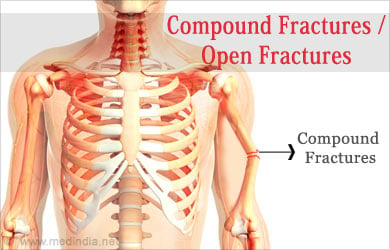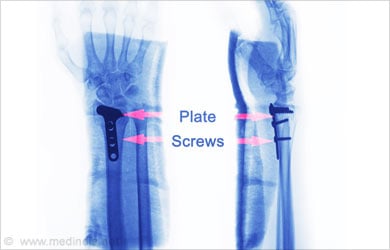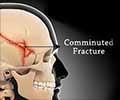- Ebnezar J. Textbook of Orthopedics 4th ed
- Open Fractures - (http://orthoinfo.aaos.org/topic.cfm?topic=a00582)
About
Compound Fracture is an injury that occurs when a fracture directly communicates with the external environment through an open wound.
Compound fractures, also called open fractures, are breaks in bones that communicate with the external environment through open wounds in the skin. Besides the usual consequences faced by a person with fractures, patients with compound fractures are more prone to infections including bone infection, which can even be life-threatening. In addition, the fractures usually take longer to heal.

Compound fractures are caused by severe trauma like vehicular accidents and sports injuries. The injury may be mild, or may be severe with damage to a major bone as well as surrounding blood vessels, nerves and muscles.
Symptoms of compound fracture are similar to those of other fractures like pain, swelling, bruising and an inability to move the affected part. The underlying muscle and bone may be visible through the wound. Bleeding may be present and may require to be controlled to prevent excessive blood loss. The wound may be contaminated with dirt, broken glass and other materials from the site of the accident.
The presence of a fracture is diagnosed with the help of imaging studies like x-ray. Treatment involves debridement and irrigation of the wound stabilization of the bone, repair of soft tissues and immobilization. Special precautions should be taken to avoid infection in the open wound and treat it if present.
How are Compound Fractures diagnosed and treated?
Compound fractures are diagnosed based on physical examination and imaging tests such as X-rays. Treatment is usually surgical.

Diagnosis of compound fractures is made based on:
- Overall physical examination of the patient to rule out internal bleeding or other injuries due to the accident that may endanger the life of the patient
- Physical examination of the affected bone and neighboring structures for the extent of injury
- Imaging test like x-ray to determine the presence and extent of the fracture
- Laboratory tests to determine the presence of infection. Routine tests are also carried out to test feasibility for surgery
Treatment of compound fractures includes the following:
- The general condition of the patient should be stabilized.
- The site is then surgically debrided to remove foreign materials and dead tissue. It is irrigated with saline to clean the wound.
- Surgery is also used to fix the ends of the broken bone in place so that they can heal in alignment. This is done using external or internal plates, screws or pins. The affected part is immobilized to facilitate healing.

- In larger wounds, muscle and skin either from a neighboring part or a distant part of the body like back or abdomen may be required to facilitate the repair.
- Painkillers are administered to reduce pain, while antibiotics are prescribed to reduce the chances of infection. A tetanus injection may be given to prevent tetanus infection.







